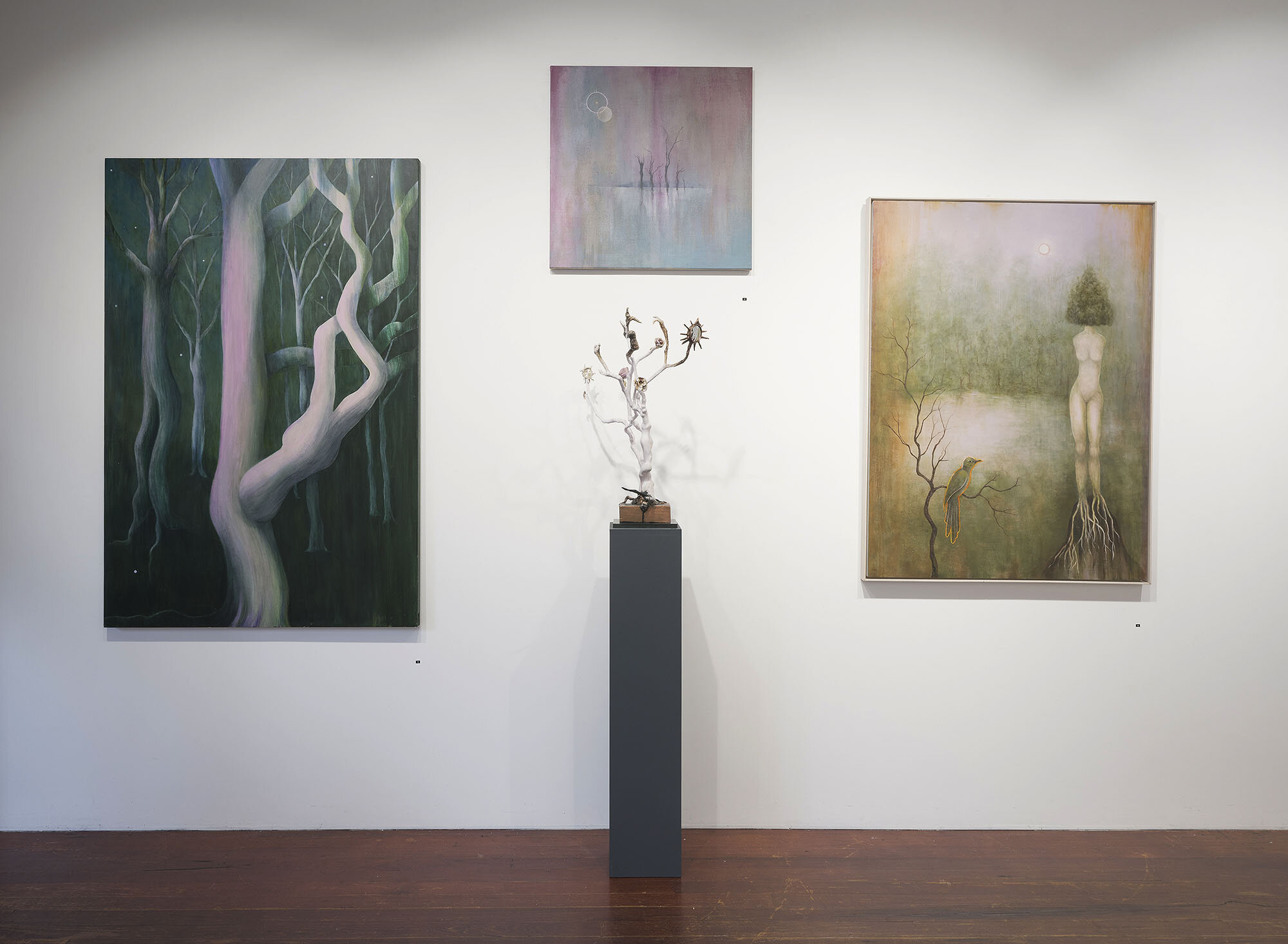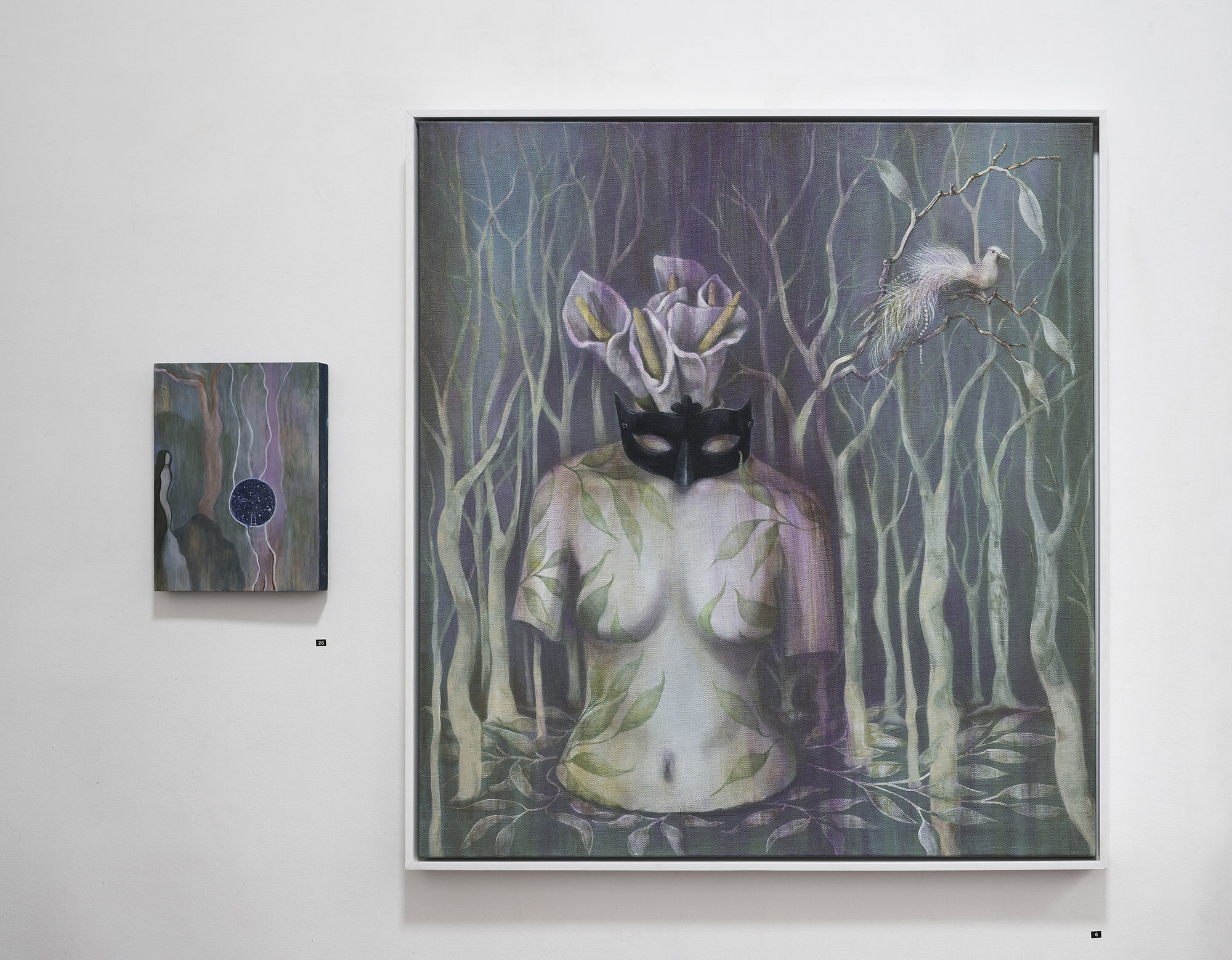2021
I see you ARO Sydney 9-20 June
Artist Profile Magazine Deputy Editor Erin McFadyen has written an online Artist Profile Review on my exhibition ‘I see you’ including 10 images of selected artworks for their June Online Newsletter 2021. I encourage you to take to read the link to it below especially as McFadyen spent time in my studio questioning me on the journey of my art practice that lead to this new body of work and my ideas & processes in creating them. In the article McFadyen also responds to Tracey Clement’s Catalogue Essay ‘I see you: Gabrielle Courtenay’s Scopic Regime’ below. Providing further links and insights into my work that I found fascinating and insightful. I feel so privileged to have two such highly regarded female art’s writer’s involved in investigating my artworks shown at ARO below. This is Clement’s third catalogue essay for exhibitions of my artwork, Clement is also a renowned Artist whose practice centres on Climate Change which is evident in the breadth of her knowledge on writings of the topic in her Catalogue Essay. The link to the Article is ; https://artistprofile.com.au/gabrielle-courtenay-2/?fbclid=IwAR1_R2ufNS_M2xAUPpRAMTXj9LWWjwND1L_ia4CQxsISUfYfek4K2xKFVoI
ARO I see you Left of Entry View "Awakening' 2109 painting on plywood 153 X 92 cm 'Tick Tock...time is slipping away 2019 mixed media sculpture 65 X 4 3X 42 cm 'The Ancestors' 2021 painting on Belgian linen 66 X 60 cm 'Under the Fire Haze Moon' 20-2021 paintings on Belgian linen Framed 126 X 93 cm
'Under the Fire Haze Moon' 2021 Acrylic, pigment, oil, pigmented gesso on plywood Framed 126 X 93 cm
ARO Installation View 2
'The Moon Goddess' 2020 ceramic figurine, bone, saltbush, acrylic, epoxy 41 X 15 X 29 cm
ARO Installation View 3 ''As night falls' 2019 acrylic, vinyl, pigmented gesso Framed 63 X 63 cm "I see You' mixed media sculpture, ' Amongst the Clouds' 2019 acrylic, vinyl, pigmented gesso on plywood 31 X 23 cm "The Moon Goddess' 2021 mixed media sculpture
ARO Installation View Back ' Loss' 2020 & 'Redemption' 2020 pencil, charcoal, pastel , acrylic, pimento gesso on canvas both 40 X 30 cm "Booty' 2020 mixed media sculpture
'Booty' 2020 1830's metal mesh purse, resin bird, tree form, acrylic, pigmented gesso, epoxy, timber 31 X 29 X 6 cm
ARO Installation View 5 Entry to Back Wall
ARO 'Solitude of Silence' 2019 mixed media drawing on plywood Framed 123 X 119 cm " Unseen#1, #2, #3' paintings on plywood each 40 X 30 cm
ARO Installation Back to Right Gallery Wall 'Untitled 2020' mixed media work on plywood 120 X 120 cm 'Even the Gods despair#4' 2020 mixed media sculpture 31 X 29 X 6 cm
'Even the Gods despair#2' 2020 mixed media sculpture 57 X 15 X 20 cm
ARO Installation View 9 'The Crimson Tide' 2021, 'The Prophesy Unfolds' 2021 paintings on Belgian linen 66 X 61 cm & 'Even the God's despair #2', #3' 2020
ARO Installation View 10 on central blade wall ' Eye of the Storm' 2019 painting on Belgian linen 40 X 30 cm ' Seeking Shelter' 2019 acrylic, painting on plywood (Framed) 126 X 94 cm 'Even the God's Despair #1' 2020 mixed media sculpture
ARO 'The Artist and her Muse' 2019 painting on plywood 122 x 82 cm_NFS , sculpture 'Cache' 2020 1830's jeweller's marquette & emu egg, saltbush, acrylic, gesso, epoxy 41 X 19 X19 cm in display case 'Unleashed' 2019 painting on plywood 153 X 92 cm
ARO " Even the God's despair#1' 2020 mixed media sculpture 56 X 23 X 16 cm
ARO Central Gallery Installation View 11
ARO Installation View 12 towards Gallery Street Glass Wall
Rear view of 'Gaia' 2021 mixed media sculpture 190 X 56 X 46 cm
ARO Gallery Back Room 'Mingling of the Blossoms' 2019 painting on plywood 90 cm diameter 'Reincarnation' 2020 mixed media sculpture 51 X 15 X 26 cm 'The Guardian' 2019 mixed media sculpture 169 X 40 X 35 cm
ARO Back Room View 2 'Following the Moonlight Path' 2019 painting on plywood 31 X 23 cm 'Lost in the Forest of my mind' 2019 (Framed) 100 X 96 cm
‘I See You: Gabrielle Courtenay’s Scopic Regime’
The sky is dark, smudged black and streaked with grey. Leafless trees raise their twisted limbs upwards, their pale bodies in poses of supplication or defiance. A silhouetted volcano erupts, saturating the air with smoke, ash and bursts of orange-red lava. A single eye peers out across this bleak vista, floating in a roiling toxic cloud, watching. Gabrielle Courtenay’s painting is untitled, but its message is emblazoned across the canvas in white sans serif text
I see you.
Looking at this blasted post-apocalyptic landscape brings to mind a passage from environmentalist and activist Bill McKibben’s 1989 book, The End of Nature, an early effort to raise public awareness about the perils of what was then called global warming.
Changes in our world can happen in our lifetime – not just changes like wars, but bigger and more total events. I believe that, without recognizing it, we have already stepped over the threshold of such a change: that we are at the end of nature. By this I do not mean the end of the world. Though they may change dramatically, the rain will still fall and the sun shine. When I say 'nature,' I mean a certain set of human ideas about the world and our place in it... More and more frequently these changes will clash with our perceptions, until, finally, our mistaken sense of nature as eternal and separate will be washed away and we will see all too clearly what we have done. (1)
Courtney’s uncanny, almost otherworldly, painting bears a striking resemblance to one such recent “total event.” Some 30 years after McKibben’s wake-up call, during the catastrophic bush fires of 2019-2020, many Australians (and viewers overseas) found denial of a climate emergency no longer possible as we watched aghast as the effects of anthropogenic climate change were made manifest in real time – swiftly moving and writ large. As massive fires raged so long and so hot that they created pyroclastic clouds, flame fuelled weather systems spitting out lighting and black hail; as towering walls of flame climbed up bare rock faces undeterred by the apparent lack of anything to burn, inexorable and omnipotent; as smoke choked even those living in major metropolitan centres; as the whole country seemed to burn and the recorded loss of life reached numbers impossible to actually comprehend: we could, if only for a moment, see what we have done. All too clearly.
But in Gabrielle Courtenay’s exhibition I see you, we are not just witnesses. We are being watched I see you.
There is something undeniably sinister about this phrase. It conjures up the scopic regime of Jeremy Bentham’s panopticon in which watching is not a passive activity, but form of social control; a way of exerting authority and power. The 18th century philosopher posited that the threat of constant surveillance could be used to coerce miscreants to modify their behaviour. At the time his ideas were perceived as both progressive and innovative. (2)
In the 21st century constant surveillance is just business as usual. We are always being watched and our data is regularly collected by security and traffic cameras, through our internet search engines, via GPS on our phones, and so on and so on. In fact, we voluntarily monitor ourselves as we obsessively upload ‘selfies’ and post evidence of our location and activities via social media. And there is no doubt that this scopic regime of human-on-human watching is modifying our behaviour. But it isn’t necessarily improving it.
Courtenay’s fantastical paintings and sculptures offer an alternative scopic regime. In her work we are still being watched. But not by other people. We are being observed, judged and found wanting by trees, animals, lakes, mountains, even the stars. Through Courtenay's eyes we see James Lovelock’s Gaia hypothesis (3) both poignantly illustrated and radically extended.
Synthesising McKibben and Lovelock, Courtenay’s paintings and sculptures evocatively wash away “our mistaken sense of nature as eternal and separate” by picturing everything on earth as part of an entwined, synergistic, self-regulating system (the basic Gaia theory). But unconstrained by the strictures of science, the artist is able to go a step further; she envisages both organic and inorganic forms as sentient. In Courtenay's work we are being watched by all the multifarious elements that we lump together under the term ‘nature’ and they aren’t passive and implacable observers. They are self-aware and intelligent
I see you.
In positioning nature as the observer (rather than the observed, subjected to both endless scientific scrutiny and the admiration of tourists et al.) the artist poses an important question that is also a challenge. If we finally accepted that we are part of nature, entangled and dependant, not separate and superior; if we learned to listen to the wisdom of trees and could hear songs sung by rocks; if we knew that everything was watching us all the time; would we at long last see all too clearly what we have done? But, more to the point, under this all-encompassing scopic regime, could we finally change?
I see you We are being watched. Now, what we going to do about it?
Tracey Clement Artist & Writer, May 2021
NOTES
1. Bill McKibben, The End of Nature, London, Viking, 1990, 7.
2. Andreea Cutieru, ‘The Architecture of Surveillance: The Panopticon Prison,’ Arch Daily, 18 April 2020, https://www.archdaily.com/937611/the-architecture-of-surveillance-the-panopticon-prison. Accessed 23 May 2021.
3. English chemist James Lovelock published a book titled Gaia: A New Look at Life on Earth in 1979. But he developed the theory in the early 1970s alongside American microbiologist Lynn Margulis. Tim Radford, ‘James Lovelock at 100: the Gaia saga continues,’ Nature, 25 June 2019, https://www.nature.com/articles/d41586-019-01969-y. Accessed 23 May 2021.




















